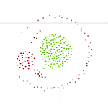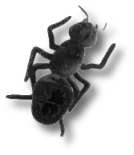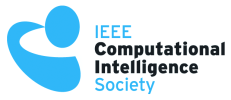Special Session on Morphogenetic Engineering

Aim and Scope
Engineered products are generally made of a number of unique, heterogeneous components assembled in a precise and complicated way, and work deterministically following the specifications given by the designers. By contrast, self-organization in natural systems (physical, biological, ecological, social) often relies on the repetition of identical agents and stochastic dynamics. Nontrivial behavior can emerge from relatively simple agent rules -a fact often touted as the hallmark of complex systems. However, most natural patterns (spots, stripes, waves, trails, clusters, hubs, etc.) can be described with a small number of statistical variables. They are either random or shaped by boundary conditions, but never exhibit an intrinsic architecture like engineered products do.
One monumental exception is biological development. Morphogenetic processes demonstrate the possibility of combining pure self-organization and elaborate structures. Multicellular organisms are composed of segments and parts arranged in specific ways that might resemble the devices of human inventiveness. Yet, they entirely self-assemble in a decentralized fashion, under the guidance of genetic and epigenetic information spontaneously evolved over millions of years and stored in every cell. In other words, they are examples of programmable self-organization -a concept not sufficiently explored so far, neither in complex systems science (for the programmable part), nor in traditional engineering (for the self-organization part). How do biological organisms achieve morphogenetic tasks so reliably? Can we export their self-formation capabilities to engineered systems? What would be the principles and best practices to create such morphogenetic systems?
Following the success of the First Morphogenetic Engineering Workshop held in Paris in June 2009, this special session aims to establish a new field of research Morphogenetic Engineering, which explores the artificial design and implementation of autonomous systems capable of developing complex, heterogeneous morphologies without central planning or external drive. Particular emphasis is set on the mutual relationship between programmability/controllability and self-organization, an issue that is often underappreciated in many disciplines.
Topics of Interest
Original, high-quality papers on Morphogenetic Engineering are solicited to this special session. Relevant topics include, but are not limited to:
- New principles of morphogenesis in artificial systems
- Swarm-based approaches to morphogenetic systems
- Programmability of self-organizing systems/self-organization of programmable systems
- Design techniques for morphogenetic engineering
- Sensitivity to environment vs. endogenous drive
- Evolvability, by variation and selection, of morphogenetic systems
- Bio-inspiration from evo-devo: combining evolutionary computation with artificial development
- Applications to real-world problems (nanotechnologies, reconfigurable robots, swarm robotics, techno-social networks, etc.) and physical implementation

Paper Submission
Papers should be submitted through the conference online submission system
Important Dates
See Ants 2010 conference dates.
Chairs of the Special Session on Morphogenetic Engineering:
| René DOURSAT Institut des Systémes Complexs Paris Ile-de-France, France |
| Hiroki SAYAMA Binghamton University, USA |


























